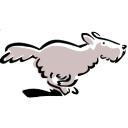Yahoo Answers is shutting down on May 4th, 2021 (Eastern Time) and beginning April 20th, 2021 (Eastern Time) the Yahoo Answers website will be in read-only mode. There will be no changes to other Yahoo properties or services, or your Yahoo account. You can find more information about the Yahoo Answers shutdown and how to download your data on this help page.
Trending News
Helped with a growth rate problem?
The population of a city triples every 4 years. It starts with a population of 100. What is the anual growth rate of this city?
Heres what i said:
A=100(3)^(n/4)
What I did to solve for the growth rate was look at 3^(n/4) as the 100 is irrelevant. I then made n=1
However i do not think that this is the right way to approch this. Can anyone point me in right way?
Dont need to solve... just maybe tell me where you would start
2 Answers
- ignoramusLv 71 decade agoFavorite Answer
You are correct.
If the population after 4 years is 3 times the original population, then the yearly increase is simply 3^¼ = 1.3161.
Check it out : call the original population 100 for convenience, then
Year 1 : 100 (1.3161) = 131.6
Year 2 : 131.6 (1.316) = 173.2
Year 3 : 173.2 (1.3161) = 228.0
Year 4 : 228.0 (1.3161) = 300
[ It is simply a geometric sequence : a, ar, ar², ar³ . . . . etc
Since you know that the fifth term, ar^4 = 3a,
then r^4 = 3, so r = 3^¼ ]
- gileLv 71 decade ago
A = 100*3^(n/4)
Anual growth rate = dA/dn
ln(A) = ln(100) + (n/4)ln(3)
(1/A)(dA/dn) = (1/4) ln(3)
dA/dn = (A/4) ln(3)
dA/dn = 25 ln(3)*3^(n/4)




